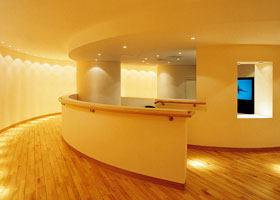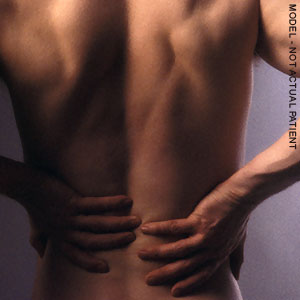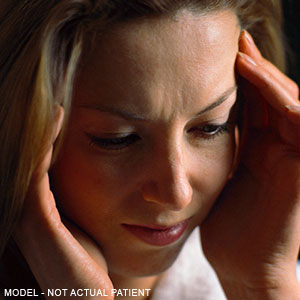
3605 Long Beach Blvd., Suite 100
Long Beach, CA 90807
Phone: 562.981.2200
Low-back pain is a common condition that can be difficult to treat. Spinal manipulation is among the treatment options used by people with low-back pain in attempts to relieve pain and improve functioning. It is performed by chiropractors and other health care professionals such as physical therapists, osteopaths, and some conventional medical doctors. This fact sheet summarizes the current scientific knowledge about the effects of spinal manipulation on low-back pain.


Each year, up to one-quarter of U.S. adults experience low-back pain. Most people have significant back pain at least once in their lives; often, the cause is unknown. Back pain varies widely. For many people, it lasts only a few weeks, no matter what treatment is used. But for others, the pain can become chronic and even debilitating. Low-back pain is a challenging condition to diagnose, treat, and study.

Spinal manipulation - sometimes called "spinal manipulative therapy" - is practiced by health care professionals such as chiropractors, physical therapists, osteopaths, and some conventional medical doctors. Practitioners perform spinal manipulation by using their hands or a device to apply a controlled force to a joint of the spine, moving it beyond its passive range of motion. The amount of force applied depends on the form of manipulation used. The goal of the treatment is to relieve pain and improve physical functioning.
In the United States, spinal manipulation is often performed as part of chiropractic care. Chiropractic is a health care approach that focuses on the relationship between the body's structure—mainly the spine—and its functioning. In chiropractic, spinal manipulation is sometimes called "adjustment." Back problems are the most common reason people seek chiropractic care. (For background information on chiropractic, see Chiropractic: An Introduction.)

Overall, studies have shown that spinal manipulation can provide mild-to-moderate relief from low-back pain and appears to be as effective as conventional medical treatments. In 2007 guidelines, the American College of Physicians and the American Pain Society include spinal manipulation as one of several treatment options for practitioners to consider using when pain does not improve with self-care.
Research is under way to determine whether the effects of spinal manipulation depend on the duration and frequency of treatment. Recent studies have found that spinal manipulation provides relief from low-back pain at least over the short term (i.e., up to 3 months), and that pain-relieving effects may continue for up to 1 year. In one study funded by the National Center for Complementary and Alternative Medicine (NCCAM) that examines long-term effects in more than 600 people with low-back pain, results to date suggest that chiropractic care involving spinal manipulation is at least as effective as conventional medical care for up to 18 months. However, less than 20 percent of participants in this study were pain free at 18 months, regardless of the type of treatment used.
When considering the evidence on spinal manipulation for low-back pain, it is important to know about the research behind the evidence. Although many clinical trials have been conducted, earlier trials tended to be small and poorly designed, making their findings less reliable. Moreover, studies have differed in focus (the specific type of back pain treated and form of manipulation used) and design (comparisons with other treatments vs. placebos). It can be difficult to clearly interpret findings when what is being measured varies widely from one study to the next. Recent research has begun to address these issues.

Reviews have concluded that spinal manipulation is relatively safe when performed by a trained and licensed practitioner. The most common side effects are generally minor and include temporary discomfort in the treated area, headache, or tiredness. These effects usually go away in 1 to 2 days.
The rate of serious complications from spinal manipulation, although not definitely known, appears to be very low overall. A potential complication from low-back manipulation is cauda equina syndrome, a condition in which nerves in the lower part of the spinal cord become compressed, resulting in pain, weakness, and loss of feeling in one or both legs. Other functions—such as bowel or bladder control—may also be affected. Reports indicate that cauda equina syndrome is an extremely rare complication. In people whose pain is caused by a herniated disc, manipulation of the low back also appears to have a very low chance of either causing or worsening cauda equina syndrome.

Projects supported by NCCAM to study spinal manipulation for low-back pain include studies of:

The NCCAM Clearinghouse provides information on CAM and NCCAM, including publications and searches of Federal databases of scientific and medical literature. The Clearinghouse does not provide medical advice, treatment recommendations, or referrals to practitioners.
Toll–free in the U.S.: 1-888-644-6226
TTY (for deaf and hard-of-hearing callers): 1-866-464-3615
Web site: nccam.nih.gov
E-mail: [email protected]
NIAMS supports research into the causes, treatment, and prevention of arthritis and musculoskeletal and skin diseases; the training of scientists; and the sharing of research-based information.
Web site: www.niams.nih.gov
Toll-free in the U.S.: 1-877-22-NIAMS
A service of the National Library of Medicine (NLM), PubMed contains publication information and (in most cases) brief summaries of articles from scientific and medical journals. CAM on PubMed, developed jointly by NCCAM and NLM, is a subset of the PubMed system and focuses on the topic of CAM.
Web site: www.ncbi.nlm.nih.gov/sites/entrez
CAM on PubMed: nccam.nih.gov/camonpubmed/
ClinicalTrials.gov is a database of information on federally and privately supported clinical trials (research studies in people) for a wide range of diseases and conditions. It is sponsored by the National Institutes of Health and the U.S. Food and Drug Administration.
Web site: www.clinicaltrials.gov
CRISP is a database of information on federally funded scientific and medical research projects being conducted at research institutions.
Web site: report.nih.gov/crisp/
|
IMPORTANT: The information on this website is NOT intended to substitute for the expertise and advice of a qualified healthcare professional. We encourage you to discuss any decisions about treatment or care with a qualified healthcare professional. The mention of any product, service, or therapy is NOT an endorsement. Neither the author nor the publisher shall be responsible for any damage or harm caused by the improper use of information in this website. |
|
Any diagnostic or treatment options presented herein are for general informational purposes and may NOT necessarily represent tests or treatments that your healthcare professional performs, provides, or would recommend. The information is simply provided for educational purposes and in a good faith effort to help patients make a more informed decision about their healthcare. Furthermore, any tests or treatments presented herein may NOT be comprehensive with regard to all the diagnostic or therapeutic options that may be available for any given medical condition or disease. Accordingly, you should always discuss any decisions about treatment or care with a qualified healthcare professional. |
This website may feature actors, models, or artistic representations. The actors and models may NOT have actually used or provided any product or service described or promoted in this website. These actors and models may be identified with the notification: "Model" or "Model – not actual patient". If actual patients are featured, they may be identified with the notification: "Actual subject", "Real subject", and/or "Before vs. After". Artistic renderings of any medical condition, disease, or treatment in this website are for illustrative purposes only and may NOT be a realistic depiction of actual medical conditions, diseases, patients, or treatments. Actual outcomes of any medical condition or actual results achieved by any treatment may be significantly different due to variations in the delivery of healthcare and the individual circumstances of each patient. |
|
"Spinal Manipulation for Low-Back Pain" |